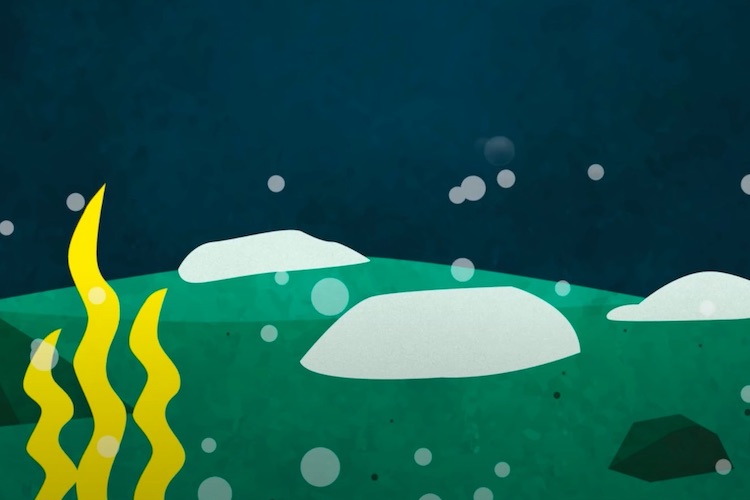Deep-sea microbes have not evolved in two billion years
Scientists found a surprising lack of evolution that supports Darwin ideas
news | February 11, 2015

On Febraury, 2 2015 Proceedings of the National Academy of Sciences published a paper “Sulfur-cycling fossil bacteria from the 1.8-Ga Duck Creek Formation provide promising evidence of evolution’s null hypothesis” describing fossils of ancient microbes that are indistinguishable from much younger fossils and contemporary species. We have asked one of the authors of this research, Prof. William Schopf from University of California, Los Angeles, to comment on this work.
The Study
An ancient deep-sea mud-inhabiting 1800-million-year-old sulfur-cycling microbial community from Western Australia is essentially identical both to a fossil community 500 million years older and to modern microbial biotas discovered off the coast of South America in 2007. The fossils are interpreted to document the impact of the mid-Precambrian increase of atmospheric oxygen, a world-changing event that altered the history of life. The apparent two-billion-year-long stasis of such sulfur-cycling ecosystems is consistent with the null hypothesis required of Darwinian evolution — if there is no change in the physical-biological environment of a well-adapted ecosystem its biotic components should similarly remain unchanged.
Background
When I was presented rock slices of the 2300-million-year-old unit (while I was a Visiting Professor at the University of New South Wales, Sydney) I was puzzled. I had studied many Precambrian microbiotas — virtually all from the shallow water deposits where the dominant microbes need light — but these new samples were unlike any I had seen. Their cobweb-like fabric indicated that they were not composed of photosynthetic microbes (which in search of light, spread out in orderly layers across surfaces) and the fossils were in their length and cell sizes unlike any I knew. The geologist-paleobiologist who gave me the specimens told me they were deep water, probably below where light penetrates. I had an inkling of the microbes that live in such settings and when I searched the literature I found the work of Victor Gallardo and Carola Espinoza, Chilean oceanographers who in 2007 had reported their findings of communities of microorganisms in deep-sea mud off the coast of South America. From their work, I saw that the web-like organization and size and form of the 2300-million-year-old fossils matched what they reported. Kindly, generously, they shared their findings with me.

How could I explain the seeming identity of fossils 2000 million years old and microbes living today? I then recalled an axiom that I had learned in a Philosophy course when I was a first-year student in college, the concept of a “null hypothesis” that derives from what logicians refer to as syllogisms. For example:
1. If result [A] is a product of and only of cause [B];
2. And if cause [B] does not exist;
3. Then result [A] will not occur.
The null hypothesis is item (3) which must be true if items (1) and (2) are true. In this instance [A] = Darwinian evolution; [B] = changing physical-biological environment. Thus, in this instance the syllogism reads:
1. If Darwinian evolution of a well-adapted ecosystem is a product of and only of a changing physical-biological environment;
2. And if a changing physical-biological environment does not exist;
3. Then Darwinian evolution will not occur.
In short, Darwinian evolution occurs as organisms respond and adapt to a changing physical-biological environment. In the absence of such change, evolution of the fundamental aspects of a well-adapted ecosystem — “the form, function and metabolic requirements” of its components — should not occur.
At first glance it may seem odd, perhaps impossible — a bit like an oxymoron (e.g., “Jumbo shrimp”) — for an apparent lack of evolution to be consistent with evolution. But pause for a moment and think of the alternative. Documentation of evolution in the absence of changes in the physical-biological environment would be an enormously surprising discovery since it would show that current understanding of Darwinian evolution is seriously flawed.
There are good reasons why this “negative” null hypothesis of Darwinian evolution has not previously been shown. This type of evolutionary stasis requires it to be documented in an ecosystem well adapted to an environment that has remained essentially unchanged in its physical and biological characteristics over literally billions of years. This requirement rules out all terrestrial and virtually all marine settings — except for subsurface marine mud in which physical conditions have held steady (due to a lack of wave action, water currents, churning, influx of sediment) and in which its biologically important characteristics (e.g., lack of oxygen, lack of light, lack of a day-night signal, and an influx of required reactants) have remained essentially constant. Similarly, this requirement indicates that relevant evidence should be sought in especially ancient, Precambrian, microbial ecosystems and suggests that such evidence is likely to be provided only by metabolically simple ecosystems in which the components are mutually interdependent and have relatively minimal metabolic demands (for the sulfur-cycling biotas described in the paper, sulfate, microbially produced sulfide, and nitrate). The two microbial fossil assemblages my colleagues and I have discovered meet all of these requirements.Serendipity! Three items combined to produce our findings: (1) Fossils that I first did not understand; (2) The 2007 discovery of oceanographers Gallardo and Espinoza and their generosity in providing me their data; and (3) my recollection of work I had done years before (which at the time I knew did not fit with previous studies but did not then have time to try to sort out).
Future Direction
I imagine that:
1. Over the next few years, additional sulfur-cycling fossil communities will be discovered, bridging the gap between 2 billion years ago and the present.
2. The sub-surface mud communities discovered will not be fundamentally different from those described in our paper.
3. These additional studies will prove sufficient to establish the null hypothesis of Darwinian evolution — which must be true if current understanding of evolution is correct.
These are guesses. It will be interesting to see how this plays out.
If you would like to contribute your own research, please contact us at [email protected]






























